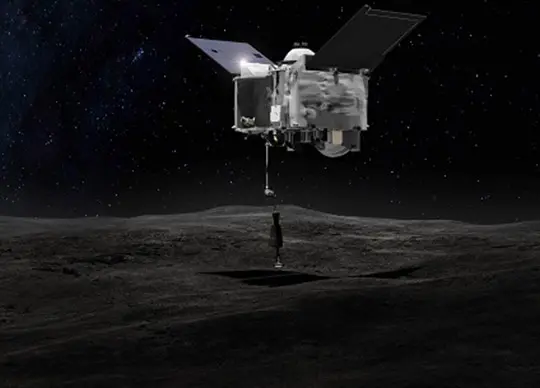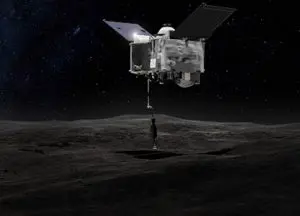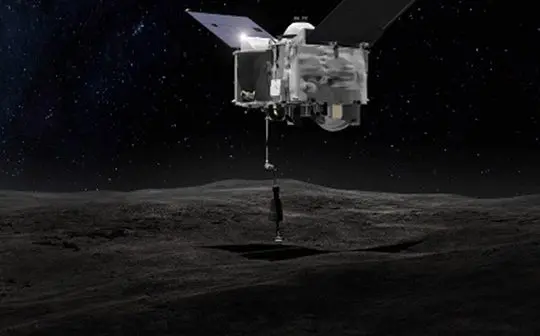

Image: This artist’s concept shows the OSIRIS-REx (Origins Spectral Interpretation Resource Identification Security – Regolith Explorer) spacecraft contacting the asteroid Bennu with the Touch-And-Go Sample Arm Mechanism or TAGSAM. The mission aims to return a sample of Bennu’s surface coating to Earth for study as well as return detailed information about the asteroid and it’s trajectory. Credits: NASA.
The first asteroid sample collected in space and brought to Earth by the United States will be unveiled at NASA’s Johnson Space Center in Houston on Wednesday, Oct. 11, and media accreditation is now open.
NASA will host a news conference at 11 a.m. EDT for the reveal, which will air live on NASA Television, the NASA app, and the agency’s website.
During the event, NASA’s OSIRIS-REx (Origins, Spectral Interpretation, Resource Identification and Security – Regolith Explorer) science team will discuss an initial analysis of the sample, which is expected to land on Sunday, Sept. 24, in the Utah desert.
After the OSIRIS-REx spacecraft enters Earth’s atmosphere and safely lands, NASA experts will collect the rocks and dust retrieved from the asteroid Bennu inside the capsule, and bring the sample to NASA Johnson for examination in a pristine curation facility.
Touchdown at the Department of Defense’s Utah Test and Training Range near Dugway, Utah, on Sept. 24, will mark the end of a seven-year journey to explore the asteroid Bennu, collect a sample from its surface, and deliver it to Earth.
The next phase of the mission, which includes both curation and research activities, will kick off after the OSIRIS-REx sample return capsule arrives at Johnson on Monday, Sept. 25. The curation team will carefully disassemble the sample container to extract the bulk of the sample and researchers will perform a first-look analysis of the sample, the results of which will be discussed for the first time Oct. 11.
NASA built a new OSIRIS-REx Sample Curation Laboratory where curators from the Astromaterials Research and Exploration Science team will manage distribution of samples to scientists around the world over the coming years. Those scientists seek to learn more about how our planet and solar system formed, as well as the origin of organics that may have led to life on Earth. A portion of the sample will also be reserved for research decades from now, utilizing technologies that will improve over the years.
Johnson houses the world’s largest collection of astromaterials from the solar system under one roof, including samples from asteroids, comets, Mars, the Moon, Sun, and dust from other stars. Scientists use world-class laboratories to perform research on planetary materials and the space environment to investigate the origin and evolution of our solar system and beyond.
To learn more about OSIRIS-REx, please visit: https://www.nasa.gov/osiris-rex





